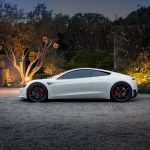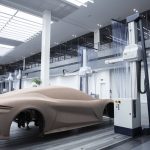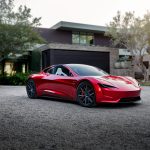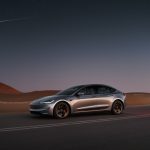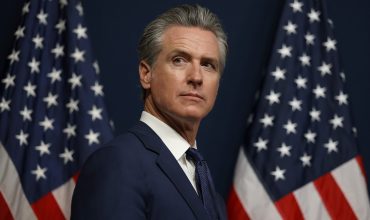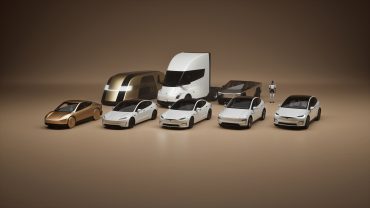
- Electric Vehicles
- Mobility Tech
Tesla Delays Affordable EV Production as Revenue Forecasts Drop
6 minute read

Tesla’s affordable EV production setback threatens market position as competitors gain ground in electric vehicle sales
Key Takeaways
- Production delays mount for Tesla’s affordable models as the first half of 2025 deadline passes without any sign of the promised vehicles that were expected to start manufacturing.
- Financial projections revised downward with revenue estimates dropping nearly 8% to $106.7 billion and earnings per share falling 19% to $2.55 as demand softens.
- Market competition intensifies as Chinese EV makers like BYD and expanding Western manufacturers challenge Tesla’s dominance while the company faces brand damage from CEO controversies.
Introduction
Tesla faces mounting pressure as its promised affordable electric vehicles fail to materialize despite repeated commitments to begin production in the first half of 2025. The company has struggled to deliver on its pledge of “more affordable models” following the cancellation of the anticipated $25,000 “Model 2.”
The delay represents a critical challenge for Tesla as it attempts to defend market share against intensifying competition from both established automakers and emerging Chinese EV manufacturers. Tesla’s failure to launch lower-priced models comes at a time when the company reports declining sales and faces increased scrutiny over its strategic direction.
Key Developments
Tesla first introduced the concept of more affordable models in its April 2024 quarterly report, stating it had “updated our future vehicle line-up to accelerate the launch of new models ahead of our previously communicated start of production in the second half of 2025.” The timeline was subsequently moved forward to the first half of 2025.
The company planned to leverage a hybrid approach using existing Model 3 and Model Y production lines while incorporating next-generation platform elements. This strategy was designed to accelerate time-to-market and minimize capital expenditures, though it may limit potential cost reductions compared to a complete redesign.
Tesla’s head of vehicle engineering, Lars Moravy, emphasized during the Q1 2025 earnings call the flexibility of working within existing production lines rather than building new facilities. However, the company acknowledged working through last-minute issues that could slow the production ramp.
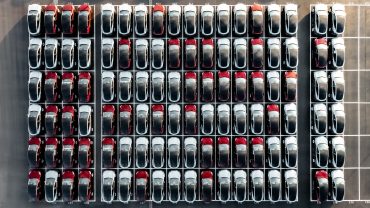
Market Impact
Tesla’s stock performance reflects investor concerns about the company’s execution challenges. Shares dropped 41.5% from $379.28 to $221.86 between January 2 and April 8, highlighting market skepticism about the company’s ability to deliver on its promises.
The company delivered 384,000 vehicles in Q2 2025, with the vast majority being Model 3 and Model Y units. These figures demonstrate continued high-volume output but show no impact from the delayed affordable models. Tesla experienced its second consecutive quarter of underwhelming sales with deliveries declining again in mid-2025.
Broader EV market conditions have deteriorated, with sales dropping in eight of the ten largest electric vehicle markets in Europe. This decline compounds Tesla’s challenges as the company attempts to maintain its market position while expanding into more price-sensitive segments.
Strategic Insights
Industry critics question whether Tesla’s brand identity, built on premium, tech-heavy vehicles, aligns with the concept of affordable models. Reader feedback published by CleanTechnica highlighted concerns that cheaper models could cannibalize existing Model 3 and Model Y sales while potentially undermining Tesla’s premium positioning.
The strategic shift toward affordable vehicles represents a departure from Tesla’s historical approach of targeting customers willing to stretch their budgets for perceived long-term savings. Increased competition and the availability of cheaper alternatives may fundamentally alter this dynamic.
Tesla’s challenges extend beyond production delays to include broader competitive pressures from Chinese manufacturers and expanding EV lineups from traditional automakers. According to the Financial Times, companies like BYD have gained significant market share while Western manufacturers such as Cadillac have strengthened their electric vehicle offerings.
Expert Opinions and Data
Financial analysts have revised Tesla’s projections significantly downward. Early 2025 revenue estimates of $116.7 billion have been reduced to $106.7 billion, while earnings per share projections dropped from $3.15 to $2.55. This represents a 19% decline in earnings expectations and reflects both softer demand and slower new model ramp-up assumptions.
CEO Elon Musk has acknowledged his often optimistic timelines while defending the company’s strategic pivot toward robotaxis and autonomous vehicles. Musk first promised a $25,000 electric vehicle during Tesla’s September 2020 “Battery Day” event but later admitted in 2022 that the company was not actively developing such a model.
Industry observers remain skeptical about Tesla’s hybrid production approach and its ability to achieve meaningful cost reductions. The repeated delays and shifting communications around affordable models have created doubts about the company’s execution capabilities without significant compromises to vehicle specifications or profitability.

Conclusion
Tesla confronts a pivotal moment as production delays for affordable models coincide with intensifying market competition and declining sales performance. The company’s inability to deliver on its affordability promises while facing increased pressure from Chinese manufacturers and expanding Western EV lineups threatens its market leadership position.
The situation reflects broader challenges in Tesla’s strategic execution as the company attempts to balance premium brand positioning with mass-market accessibility. Without successful delivery of compelling, affordable electric vehicles, Tesla risks further market share erosion in an increasingly competitive landscape.
